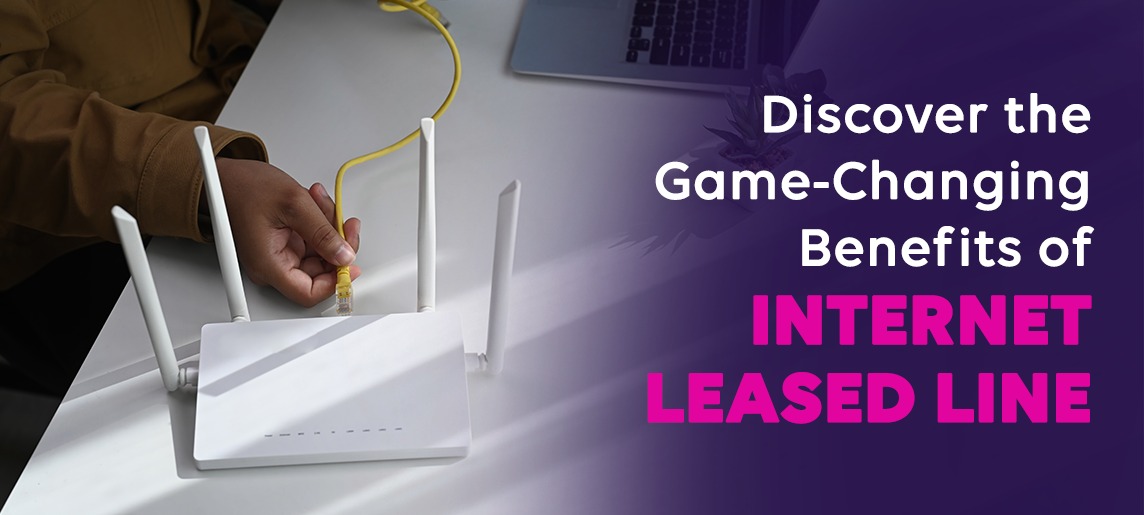Everyone can use the internet nowadays. But have you ever wondered how you are able to use such high-speed Wi-Fi or mobile networks like 5G? As internet speeds increase, the use of Fiber optic cables is becoming more and more common.
With blazing high-speed networks, you can stream 4K videos without any lag, and enjoy your favourite Netflix shows seamlessly
In this blog, we have covered how this seamless experience has been improved by fiber optic cables.
Here are Five Points to Help You Easily Understand the Working and Usage of Fiber Optic Cables:
1-What is Fiber Optic Cable?
Fiber optic cables consist of thin glass or plastic fibers bundled together and encased in a protective jacket, even finer than a strand of hair. Unlike traditional copper cables, these cables transmit data at significantly faster speeds, thanks to the ability of light to travel through glass or plastic fibers faster than electricity through copper wire. Additionally, fiber optic cables are less prone to interference and signal degradation, ensuring a reliable means of data transmission.
Internet fiber optic cable finds applications in various fields, including telecommunications, television for high-speed internet connection, medical imaging, and military communications. The popularity of fiber optic data transmission is on the rise due to its high speed, cost-effectiveness, and durability.
2-How are Fiber Optic Cables Made?
Fiber optic cables are made of very thin strands of glass or plastic, thinner than human hair and bundling them together to form a cable.
First, materials like silica or plastic are heated to very high temperatures and then stretched out into long thin strands. These strands are then cooled and hardened to create the Fibers. They are gathered together and placed inside a protective coating called a buffer.
The fibers and buffer are then wrapped with a layer of protective material and twisted together to form a cable.
Finally, the cables are tested to ensure that they meet industry standards for strength, flexibility, and light transmission.
3-How do they Transmit Data?
Internet fiber optic cables transmit data in the form of light signals. A transmitter device converts electrical signals into light, which then travels through the fibers. At the receiving end, a device called a receiver converts the light back into electronic signals. The transmission occurs at the speed of light, approximately 186,000 miles per second, and the data is reflected off the cladding back into the core, enabling transmission over long distances without information loss.
Information transmission in fiber ethernet cable uses electrical signals, making it ideal for areas with electrical noise. Additionally, these cables are less vulnerable to temperature changes and resistant to water, enhancing their suitability for outdoor use. The security of optical cables is also notable, as they are challenging to tap into due to the difficulty in detecting and intercepting light signals.
4-Why are Fiber Optic Cables Popular?
Fiber optic cables' popularity stems from their light-based technology. This allows for high-speed data transfer over long distances, making them ideal for internet service providers, cable TV, and medical equipment that require high bandwidth.
It is also commonly used in industrial settings, such as oil and gas pipelines. In these places, its resistance to interference and signal degradation is particularly valuable.
The increasing popularity of fiber cable internet can be attributed to their capability to provide high-speed internet access to homes and businesses. With the ability to transmit data at faster speeds than traditional copper cables, optical cables offer seamless streaming of high-definition videos and support faster internet applications without interruptions.
5-Why are Fiber Optic Cables Better than Copper Cables?
Fiber optics use light signals for faster data transmission over long distances compared to copper cables.
The efficiency of optical wire cable surpasses that of copper cables, limited by their copper wires. Optical fiber cable in computer networks transmit data at higher speeds with minimal interference, making them ideal for high-speed data transfer applications. Moreover, they prove to be more cost-effective in the long run, requiring less maintenance and boasting a longer lifespan.
Optical Transmission: Understanding Light Propagation in Fiber Optics
Optical transmission in fiber optics is a fascinating journey that hinges on the principles of light propagation. In this realm of data transfer, the medium of choice is optical cable wire, where pulses of light become carriers of information. Let's unravel the intricacies of optical transmission in fiber optics and explore how this technology shapes our modern communication landscape.
The phenomenon of total internal reflection plays a crucial role in ensuring that the light signals remain trapped within the core. When light encounters the boundary between the core and cladding at a certain angle, it reflects back into the core instead of escaping. This process allows the light to travel great distances without significant attenuation.
Components of Optical Fiber Transmission
1. Transmitter: The journey of optical transmission begins with the transmitter. In this context, the transmitter converts electrical signals into light pulses. This conversion is typically achieved using a light-emitting diode (LED) or a laser diode, depending on the specific requirements of the communication system.
2. Fiber Optic Cable: The star of the show, the fiber optic cable, is the conduit through which light signals travel. Comprising a core and cladding, these cables come in two primary types: single-mode and multi-mode. The choice between the two depends on factors like distance and bandwidth requirements.
3. Receiver: At the receiving end, a photosensitive device, often a photodiode, awaits the incoming light signals. The receiver's role is to convert these optical signals back into electrical signals for further processing.
4. Amplifiers and Repeaters: For long-distance transmissions, amplifiers and repeaters come into play. Amplifiers boost the strength of optical signals, compensating for any loss during transmission. Repeaters regenerate the optical signals, allowing them to continue their journey with renewed vigour.
Challenges and Solutions
While optical transmission offers remarkable advantages, it isn't without challenges. Factors like dispersion, where light signals spread out as they travel, and attenuation, the gradual loss of signal strength, need to be addressed. Engineers employ techniques such as dispersion compensation and signal amplification to mitigate these challenges and ensure the integrity of transmitted data.
In the ever-evolving landscape of optical transmission, innovations like wavelength-division multiplexing (WDM) have emerged. WDM enables the simultaneous transmission of multiple wavelengths (or colours) of light through a single fiber, significantly increasing the overall data-carrying capacity.
Single-mode vs. Multi-mode Fiber: Characteristics and Applications
The classification of fiber optic cables into single-mode and multi-mode is pivotal in optimising performance based on specific requirements. Whereas types of optical fiber come with its unique characteristics, influencing factors like data speed, distance, and deployment costs.
1. Single-mode Fiber (SMF):
Fiber optic single mode fibers have a smaller core size (around 9 microns) and allow only a single mode of light to travel through the core. This results in a more focused and direct path for light signals.
SMFs are ideal for long-distance transmissions where signal attenuation is a critical consideration. They are commonly used in telecommunications, data centres, and high-speed internet connections.
2. Multi-mode Fiber (MMF)
Multi-mode fibers feature a larger core size (typically 50 or 62.5 microns) that accommodates multiple modes of light. The larger core allows for a variety of light paths within the fiber.
MMFs are suitable for shorter-distance transmissions, such as within buildings or campuses. They find applications in local area networks (LANs), video surveillance, and certain data centre connections.
Also Read: What Are the Most Important Things About Internet Safety?
To Conclude
Fiber cable internet are emerging as the superior choice for data transfer applications. They are capable of carrying large amounts of data, over long distances, at high speeds, with minimal interference and degradation.
They are more durable, more cost-effective, and easier to install in various places. For these reasons, fiber optic cables are quickly becoming the preferred choice for a variety of applications.
Connect with us on Facebook for Internet and Broadband Tips and Tricks.





 By Rahul Nambiar | 27th March 2024
By Rahul Nambiar | 27th March 2024

 By Rahul Nambiar | 19th March 2024
By Rahul Nambiar | 19th March 2024
 By Rahul Nambiar | 30th January 2024
By Rahul Nambiar | 30th January 2024